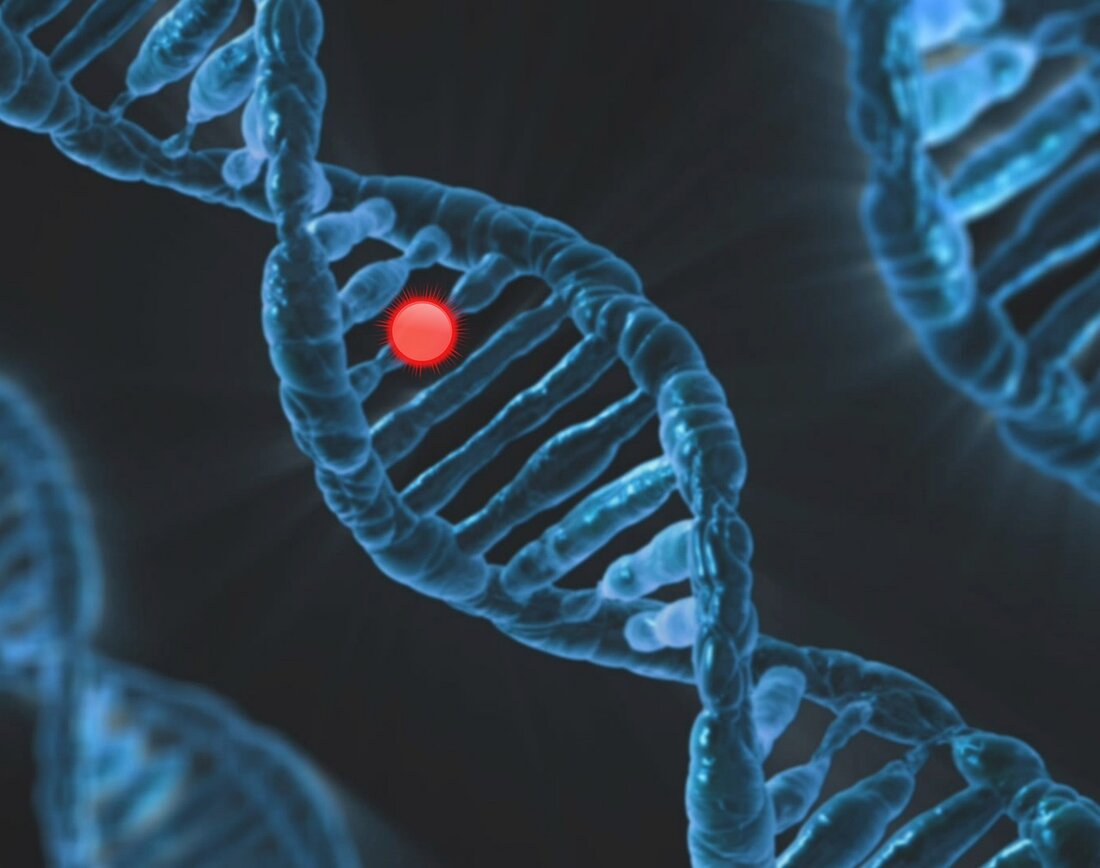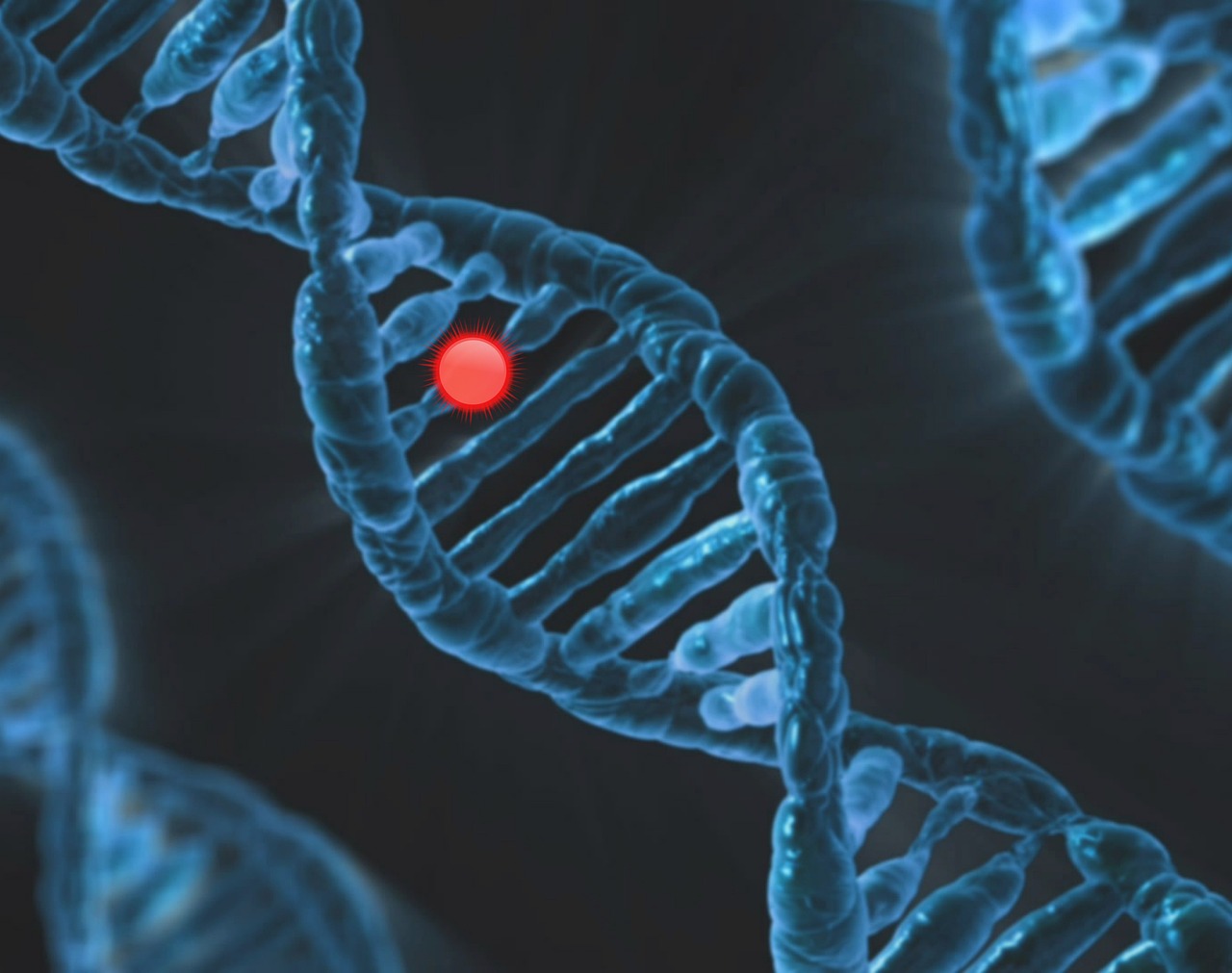Orthomolecular Medicine: The Secrets to Your Health Revealed!
Discover the basics and applications of orthomolecular medicine, its history, nutrients and individual therapies to promote health.

Orthomolecular Medicine: The Secrets to Your Health Revealed!
Orthomolecular medicine is a fascinating approach to natural medicine that aims to promote health through the targeted supply of vital substances in optimal quantities. The term, coined by Linus Pauling, literally means “the right molecules” and is based on the idea that many diseases arise from an imbalance of nutrients in the body. Instead of just treating symptoms, this method aims to support the biochemical processes in the organism and compensate for deficiencies. Vitamins, minerals, amino acids and other essential substances play a central role. In a world where nutrition is often characterized by deficiency or excess, orthomolecular medicine offers an individual way to increase well-being and activate self-healing powers. This article highlights some exciting approaches and applications of this holistic concept.
Introduction to orthomolecular medicine
Imagine your body is a highly complex orchestra where every instrument – every cell, every molecule – must play in perfect unison to create harmony. But what if individual notes are missing or sound wrong? This is exactly where orthomolecular medicine comes in, a concept that aims to bring biochemical disharmonies back into balance through the targeted supply of vital substances. This approach, developed in the 1960s by Linus Pauling, a two-time Nobel Prize winner, is based on the belief that many health problems arise from a deficiency or imbalance of essential substances such as vitamins, minerals, trace elements or fatty acids. Pauling coined the term “orthomolecular” in 1967 to describe a method that provides vital molecules in optimal concentrations, as he explained in a paper.
At its core, this approach aims to not only treat diseases, but also to prevent them in the first place by providing the body with everything it needs for its biochemical processes. As early as 1968, Pauling defined “orthomolecular psychiatric therapy” as a way to alleviate mental illness by adjusting nutrient concentrations. Later, in 1974, together with Arthur B. Robinson, he expanded on the assumption that targeted variation of these molecules could sustainably improve health. The basic idea, which is also in the Wikipedia is described in detail: Modern nutrition often does not provide sufficient vital substances, which leads to a chronic deficiency that promotes illness in the long term.
A central pillar of this concept is the use of vital substances in dosages that far exceed the recommendations of international organizations such as the WHO. Pauling himself was convinced that, for example, 1,000 milligrams of vitamin C daily could reduce cold rates by 45 percent - a claim he backed up with recommendations of up to 18,000 milligrams per day. This so-called megavitamin therapy, in which vitamins are taken in amounts 100 to 1,000 times higher than physiological requirements, has become a hallmark of orthomolecular medicine. Trailblazers like Abram Hoffer, who founded the Journal of Orthomolecular Medicine, also helped popularize this approach.
But what exactly does it mean to act according to orthomolecular principles? Inspired by general definitions such as those on digital-institut.de can be found, one could say that principles serve as guidelines that guide actions and thoughts towards a biochemical balance. It's about looking at the body as a system whose functions can be optimized through the right balance of molecules. This belief is reflected in the assumption that many chronic diseases or complaints could be influenced by targeted supplementation - an idea that is, however, not without controversy.
In fact, orthomolecular medicine is under critical scrutiny in the scientific community. Studies have so far been unable to provide convincing evidence that high doses of vital substances have a clinically relevant benefit in people without demonstrable nutritional deficiencies. For example, it was shown that vitamin C neither prevents colds nor has any significant effects on cancer patients. Critics also complain that the assumption of widespread nutritional deficiencies in Western societies is often incorrect and that many diseases cannot be cured through nutrient intake alone. In addition, it is pointed out that excessive doses pose health risks - fat-soluble vitamins can accumulate in the body, while excessive amounts of vitamin B6 or niacin lead to undesirable side effects.
In Germany the debate is intensifying because only a few vitamin preparations are approved as medicines; Most fall under the category of dietary supplements, further questioning their medical relevance. Nevertheless, for many supporters, orthomolecular medicine remains a promising way to achieve individual health goals, especially at a time when personalized approaches are becoming increasingly important.
History of orthomolecular medicine

Let's travel back to the mid-20th century, when a revolutionary idea shook up the world of medicine: the idea that nutrients in high doses could not only correct deficiencies, but prevent and treat disease. This idea took concrete form in 1967, when Linus Pauling, a brilliant chemist and two-time Nobel Prize winner, coined the term “orthomolecular.” With his vision of correcting biochemical imbalances through an optimal molecular environment, he laid the foundation for a new direction in alternative medicine. Just one year later, in 1968, he introduced orthomolecular psychiatry, a concept for treating mental illnesses through targeted nutrient intake that polarized the medical community.
However, Pauling was not alone on this journey. Pioneers such as Humphry Osmond and Abram Hoffer had already taken significant steps in the 1950s. Osmond, a renowned psychiatrist, worked with Hoffer to develop niacin therapy to treat schizophrenia, in which up to 17,000 milligrams of vitamin B3 were administered daily. Her work, among other things, is featured in an article PMC documented led to the Hoffer-Osmond adrenochrome hypothesis, which linked schizophrenia to an adrenaline-based hallucinogen. Hoffer himself later founded the “Journal of Orthomolecular Medicine,” which became a platform for many supporters of this method.
In the same era, William Kaufman made a name for himself by using megadoses of vitamin B3—up to 5,000 milligrams of niacinamide daily—to treat arthritis. His work “The Common Form of Joint Dysfunction,” published in 1949, documented impressive results with no significant side effects in his patients. Kaufman also emphasized a holistic approach that focused on listening and understanding patients' needs, which differentiated his method from conventional medicine.
Another milestone was set by Carl C. Pfeiffer, who researched the role of trace elements and minerals in schizophrenia in the 1960s and 1970s. He divided the disease into three biochemical types - histapenia, histadelia and pyroluria - and formulated "Pfeiffer's Law", according to which natural substances could achieve effects similar to drugs, but without their side effects. His numerous publications on nutrition and mental illness had a lasting influence on the orthomolecular movement and brought new perspectives to the discussion about mental health.
At the same time, brothers Wilfrid and Evan Shute devoted themselves to researching high doses of vitamin E to treat heart disease. In the 1940s and 1950s, they encountered considerable resistance from mainstream medicine, which was skeptical about the use of vitamins in serious illnesses. Nevertheless, their studies laid the foundation for increased interest in antioxidants and their potential benefits for cardiovascular health, a field of research that continues to be developed today.
The 1970s marked another turning point when Pauling popularized his theories on megavitamin therapy. He claimed that daily doses of 1,000 milligrams of vitamin C could reduce cold rates by 45 percent, and even recommended amounts between 6,000 and 18,000 milligrams in Linus Pauling Institute flyers. These radical approaches, which often involved 100 to 1,000 times the physiological requirement, attracted great interest but also sharp criticism, as in the detailed presentation Wikipedia can be read.
Orthomolecular medicine developed further over the decades, but scientific recognition remained elusive. Studies have failed to provide convincing evidence that high doses of vitamins are effective against colds or cancer, and critics have pointed out that the assumption of widespread nutrient deficiencies in modern societies is often inaccurate. Nevertheless, the method's popularity grew, particularly in alternative circles, where individual approaches to health promotion were increasingly in demand.
In Germany, another aspect was added: Only a few vitamin preparations received approval as medicines; most were classified as dietary supplements and were therefore subject to the food law instead of the medicine law. This led to an ongoing debate about the medical relevance and the high costs often incurred by patients. Despite these challenges, the history of orthomolecular medicine remains a fascinating journey through innovative ideas and controversial discussions that continue to have an impact today.
Important nutrients and their functions

Have you ever wondered what tiny building blocks in your body keep the big wheels of health turning? In orthomolecular therapy, the focus is on vitamins, minerals and amino acids as the key to a balanced biochemical system. These essential substances, which the body often cannot produce in sufficient quantities, are used specifically to correct deficiencies and optimize cell functions. The focus is not just on the mere intake, but on individually tailored dosages that can be well above the usual recommendations.
Let's start with vitamins, organic molecules that are essential for metabolism in small quantities. As in a comprehensive overview Wikipedia described, there are 13 recognized vitamins, which are divided into water-soluble ones, such as the B vitamins and vitamin C, and fat-soluble ones, such as A, D, E and K. Each plays a specific role: Vitamin A supports cell growth, Vitamin D regulates mineral metabolism, while Vitamin E and C act as antioxidants to fight free radicals. In orthomolecular medicine, these substances are often administered in high doses, for example to strengthen the immune system or relieve chronic inflammation. Vitamin E is particularly in focus, as studies such as those by Williams et al. (1962), documented on WebMD, have investigated its potential effect on circulatory disorders such as intermittent claudication.
A critical issue when using megadoses of vitamins is the risk of overdose. While water-soluble vitamins such as vitamin C are usually excreted in the urine and rarely cause harm, fat-soluble variants such as vitamin A or E can accumulate in the body and cause toxic effects. However, supporters of orthomolecular therapy argue that such risks can be minimized through careful monitoring and individual adjustment. They point out that deficiencies - such as scurvy due to a vitamin C deficiency or beriberi due to a lack of vitamin B1 - cause health problems far more often than an excess.
In addition to vitamins, minerals play an equally important role in this therapeutic approach. These inorganic substances, including calcium, magnesium, zinc and selenium, are essential for numerous processes in the body. They support bone structure, regulate water balance and are involved in enzymatic reactions. In orthomolecular practice it is often assumed that modern diets do not provide enough of these substances, which is why targeted supplementation is necessary. Zinc, for example, is often used to strengthen the immune system, while magnesium is said to help relieve stress or muscle cramps. The dosages can be significantly higher than the generally recommended daily amounts in order to compensate for specific biochemical imbalances.
Another pillar of orthomolecular therapy is amino acids, the building blocks of proteins. Of the approximately 20 amino acids that the human body needs, nine are considered essential because they cannot be synthesized themselves. In this context, substances such as lysine, tryptophan or methionine are not only viewed as part of the diet, but also as targeted support for neurochemical processes or muscle regeneration. Tryptophan, for example, a precursor to the neurotransmitter serotonin, is often recommended for sleep disorders or mood problems. Orthomolecular medicine is based on the idea that an imbalance of these molecules can lead to psychological or physical problems that could be corrected by increasing intake.
In practice, the use of these substances is often individual, based on blood analyzes or other diagnostic procedures to identify specific deficiencies. Proponents emphasize that this personalized approach is the key to success because every organism has different needs. Critics, however, point out that scientific evidence for the effectiveness of such high-dose therapies is often lacking and that a balanced diet is in most cases sufficient to cover the need.
The cultural and historical context in which these substances are viewed is also interesting. Long before vitamins were discovered between 1910 and 1948, the health benefits of certain foods, such as citrus fruits against scurvy, were recognized. Today, orthomolecular therapy faces the challenge of combining traditional knowledge with modern scientific standards to further refine its approaches and gain broader acceptance.
Application of micronutrients in chronic diseases

Could it be that tiny molecules make a big difference when it comes to managing serious illnesses? In the world of orthomolecular medicine, this idea is pursued by targeting micronutrients such as vitamins, minerals and amino acids to support diseases such as diabetes, cardiovascular diseases and autoimmune diseases. The approach is based on the belief that biochemical imbalances in the body are often the root of such problems and can be corrected through optimized nutrient intake. This is not just about prevention, but also about complementary therapy that is intended to support conventional treatments.
In diabetes, particularly type 2, the focus is often on regulating blood sugar levels and improving insulin sensitivity. Orthomolecular approaches rely on substances such as chromium, which influences sugar, protein and fat metabolism, as well as magnesium, which plays a role in blood sugar regulation. These micronutrients, their functions, among other things Academy Sports Health described in detail are intended to help minimize fluctuations in glucose balance. In addition, vitamin B6 is often recommended because it supports protein metabolism and the nervous system, which can be important in diabetic neuropathy. Proponents argue that targeted supplementation – often in higher doses than usual – could optimize metabolic processes and reduce complications in the long term.
Another field of application is cardiovascular diseases, in which oxidative damage and inflammation play a central role. Antioxidants such as vitamin E and C are the focus here as they neutralize free radicals and thus promote vascular health. Vitamin E was used in early studies, such as those by the Shute brothers in the 1940s, to treat heart problems by improving blood flow. Omega-3 fatty acids are also said to have a protective effect on the heart, as they can inhibit inflammation and have a positive effect on blood lipid levels. Orthomolecular therapists emphasize that such nutrients, in combination with a modified diet, could reduce the risk of heart attacks or strokes, although scientific evidence for these claims is often controversial.
Autoimmune diseases, in which the immune system attacks the body's own structures, represent a particular challenge. Here, orthomolecular medicine aims to modulate the immune system and dampen inflammatory processes. Vitamin D, which regulates calcium metabolism and has an immune-modulating effect, is often recommended for diseases such as multiple sclerosis or rheumatoid arthritis. Studies suggest that a deficiency of this vitamin, which is common in Germany due to low sun exposure, is as follows Wikipedia explained, could increase the risk of autoimmune reactions. Zinc and selenium, both important antioxidants, are also used to support cellular health and mitigate excessive immune responses.
A central aspect of these forms of therapy is individualization. Orthomolecular practitioners often perform comprehensive analyzes to identify specific deficiencies or imbalances in patients before administering nutrients in high doses. This personalized approach is intended to ensure that the body receives exactly what it needs to activate its self-healing powers. For example, for a patient with diabetes and a simultaneous cardiovascular risk, a combination of magnesium, chromium and vitamin E could be recommended to address several problem areas at the same time.
However, critical voices urge caution. The German Society for Nutrition emphasizes that in countries like Germany there is no general deficiency of micronutrients and that a balanced diet is sufficient in most cases. In addition, there is often a lack of large-scale studies that clearly demonstrate the effectiveness of high-dose supplements in chronic diseases. It is also noted that excessive use of nutrients, especially fat-soluble vitamins, poses health risks when they accumulate in the body. Nevertheless, many supporters see orthomolecular medicine as a valuable addition, especially when conventional therapies reach their limits.
The discussion about these approaches shows how complex the interactions in the human body are. While some patients report improved quality of life with orthomolecular interventions, the scientific community remains divided. The search for a balance between individual support and evidence-based medicine continues, and new findings may further clarify the role of micronutrients in the treatment of chronic diseases.
Orthomolecular medicine in prevention

What if the best defense against disease wasn't in a pill, but on your plate? Orthomolecular medicine pursues precisely this idea, using nutrients as powerful tools to prevent disease and promote overall well-being. This is about supplying the body with essential substances in optimal quantities in order to support biochemical processes and strengthen the immune system. This preventative approach aims to maintain balance in the organism before symptoms even arise.
The cornerstones of health promotion include micronutrients such as vitamins and minerals, which fulfill vital functions in small quantities. Vitamin C, for example, supports the immune system and promotes tissue regeneration, while vitamin D plays a key role in calcium regulation and thus bone and dental health. Trace elements such as zinc also contribute to wound healing and immune defense, as described in detail Health Knowledge Foundation is explained. In orthomolecular practice it is often emphasized that a targeted intake of these substances - sometimes in higher doses than usual - can help to avoid deficiencies and increase the body's resistance.
Another important group are the macronutrients, which are needed in larger quantities and also contribute to prevention. Carbohydrates provide quick energy, while fats, particularly unsaturated fatty acids such as omega-3 and omega-6, have anti-inflammatory properties and can support vascular health. Proteins, in turn, which are broken down into amino acids, are essential for building and repairing tissue. A balanced intake of these nutrients, as on Wikipedia described, forms the basis for a stable physical condition and can reduce the risk of chronic diseases such as diabetes or heart problems.
A central aspect of orthomolecular medicine is the idea that many people are not sufficiently supplied with essential substances due to modern dietary habits - often characterized by industrially processed foods with "empty calories". Antioxidants such as vitamin E or selenium are highlighted here as a protective shield against oxidative stress, which is associated with aging and various diseases. Through targeted supplementation or a nutrient-rich diet, the body should be better able to prevent cell damage and stay healthy in the long term.
Fiber, although not a classic nutrient in the sense of energy supply, also plays an important role in prevention. They promote healthy digestion, regulate blood sugar levels and can reduce the risk of intestinal diseases. Orthomolecular approaches often incorporate such non-digestible carbohydrates into diets to support the gut microbiome, which in turn strengthens the immune system. This holistic view shows how closely the different nutrient groups are linked to promote well-being.
Another focus is on the individualization of nutrient intake. Not everyone has the same needs, and factors such as age, lifestyle or genetics can play a role. In orthomolecular medicine, diagnostic tests are often used to identify specific deficits and to make personalized recommendations based on them. For example, someone with an increased need for vitamin D - for example due to low sun exposure - could be specifically supplemented to prevent deficiencies that could lead to long-term problems such as osteoporosis.
However, critics of this method point out that in many Western countries there is no general lack of nutrients and a balanced diet is usually sufficient to meet requirements. They warn against excessive intake of supplements, especially fat-soluble vitamins, which can accumulate in the body and have toxic effects. Nevertheless, the idea of promoting health through optimized nutrient supply remains attractive to many people, especially at a time when prevention is becoming increasingly important.
Individual nutritional therapy

Imagine medicine that doesn't look for one-size-fits-all solutions, but decodes your body's unique blueprint to deliver exactly what you need. This is exactly what orthomolecular medicine relies on with its personalized approaches, which are playing an increasingly important role in patient care. There is no blanket supplementation or treatment here, but rather the focus is on tailored strategies that meet the unique needs of each individual. This path promises to not only relieve symptoms, but to promote health on a deep, biochemical level.
A central component of this approach is the precise analysis of the nutrient supply. Modern diagnostic methods such as blood, saliva or stool tests make it possible to detect deficits or imbalances at an early stage, before they lead to noticeable symptoms. Like on the side of the Goller private practice As highlighted, the need for essential substances varies depending on individual factors such as metabolism, lifestyle, environmental pollution or existing pre-existing illnesses. Such an examination forms the basis for making targeted recommendations for nutritional supplements or dietary changes that are tailored precisely to the respective person.
The importance of this individualization is particularly evident in the avoidance of deficiency states, which can often subliminally lead to exhaustion, concentration problems or physical complaints. It is equally important to prevent overdoses, as too much of certain nutrients - especially fat-soluble vitamins - can be harmful. The aim of personalized dosage is to create a balanced nutrient profile that optimally supports metabolism and the immune system. This approach takes into account that, for example, a stressed professional with high energy consumption has different needs than an older person with limited nutrient intake.
Another advantage of personalized orthomolecular medicine lies in the targeted selection of micronutrients that must be consumed through food. These include vitamins, minerals, trace elements, antioxidants, amino acids, fatty acids as well as pre- and probiotics, as stated on the website Altona health practice described. The quality of these substances plays just as important a role as the quantity, which is why attention is often paid not only to supplements, but also to a high-quality diet. For example, a patient with digestive problems might benefit from probiotics, while someone with oxidative stress is more likely to rely on antioxidants such as vitamin E or selenium.
The importance of such tailored approaches to patient care lies in their ability to have a preventive and therapeutic effect at the same time. By identifying and correcting individual weaknesses in the biochemical balance, not only can current health be improved, but the risk of future illnesses can also be reduced. An example would be the targeted intake of vitamin D in people with little sun exposure in order to prevent deficiencies that could lead to bone problems or immune deficiencies in the long term. This precise adjustment makes it possible to sustainably increase the quality of life and performance of patients.
Another aspect is the close collaboration between therapists and patients. Personalized orthomolecular medicine requires a high level of communication to take life circumstances, complaints and goals into account. Nutrition plans and supplementation strategies are often adjusted in several steps based on the progress and feedback of those affected. This collaborative approach strengthens trust and motivates many to actively participate in their health rather than simply being passive recipients of treatment.
However, critics note that scientific evidence for some personalized approaches is still limited and that the costs of comprehensive diagnostics and high-quality supplements are not affordable for everyone. Nevertheless, many see this method as a way to move medicine away from standardized solutions and towards more individualized care. The continued development of diagnostic technologies could make this approach even more precise and accessible in the future, further revolutionizing patient care.
Combination of orthomolecular medicine and other natural healing methods

What if different healing modalities worked hand in hand to create a greater whole? In alternative medicine, it is increasingly recognized that orthomolecular medicine does not have to work in isolation, but can develop powerful synergies in combination with other naturopathic methods. By combining nutrient therapy with approaches such as phytotherapy, hydrotherapy or acupuncture, a holistic treatment concept is created that aims to support the body's self-healing powers on multiple levels. This integrative approach promises to combine the strengths of each method and thus promote comprehensive health.
A central point of orthomolecular medicine is the correction of biochemical imbalances through the targeted supply of vitamins, minerals and other vital substances, such as Wikipedia presented in detail. This focus on the molecular level complements perfectly with naturopathy, which also focuses on stimulating the body's own healing powers. For example, orthomolecular therapy with high doses of vitamin C or zinc can strengthen the immune system, while at the same time phytotherapeutic approaches - i.e. the use of medicinal plants - contribute anti-inflammatory or calming effects. A combination of echinacea preparations and vitamin C could provide double support for colds, for example, by promoting both the immune system and the biochemical balance.
Another fruitful connection can be seen between orthomolecular medicine and hydrotherapy, a traditional method of naturopathy that uses water in the form of baths, wraps or Kneipp treatments. While nutrient therapy supplies the body with essential substances from the inside, hydrotherapy supports blood circulation, detoxification and relaxation from the outside. For example, a patient with chronic pain might benefit from magnesium supplementation to relieve muscle tension, while warm baths promote circulation and supplement the absorption of minerals through the skin. This double effect can accelerate regeneration and increase well-being.
Exciting synergies can also be achieved with acupuncture, a thousands of years old method from traditional Chinese medicine. Acupuncture aims to harmonize the flow of energy in the body and clear blockages, often leading to improved organ function and pain relief. In combination with orthomolecular therapy, which uses vitamin B6 or amino acids to support the nervous system, for example, the effect on neurological complaints such as migraines or stress could be increased. The nutrients support the biochemical processes, while acupuncture stimulates the energetic pathways - an interaction that addresses the body on multiple levels.
Another example is the connection with nutritional medicine, a core area of naturopathy, as shown on Wikipedia described. While orthomolecular medicine often relies on targeted supplementation to compensate for deficiencies, nutritional medicine emphasizes a holistic, balanced diet that is rich in natural nutrients. Both approaches can complement each other, for example by combining individual nutritional therapy with a nutritional plan that relies on unprocessed foods and regional products. For example, a patient with digestive problems could benefit from probiotics and omega-3 fatty acids from orthomolecular medicine, while a diet rich in fiber additionally supports intestinal health.
The combination with psychosomatic approaches from naturopathy also offers great potential. Stress and emotional strain can increase biochemical imbalances, for example through an increased need for B vitamins or magnesium. Here, orthomolecular medicine could intervene specifically to stabilize the body, while relaxation techniques such as meditation or autogenic training, which are often used in naturopathy, reduce psychological stress. This dual strategy addresses both the physical and mental levels, creating a comprehensive basis for health.
The synergies between these methods show how versatile and adaptable alternative healing methods can be. While critics of orthomolecular medicine point out that there is a lack of scientific evidence for many of its approaches, combining it with other naturopathic methods could help enhance the effects and provide holistic solutions. Integrative medicine, which combines naturopathy and conventional approaches, is becoming increasingly important, and orthomolecular medicine could provide an important bridge here.
Criticism and challenges of orthomolecular medicine

Why does a method based on something as basic as nutrients cause such heated debate in the scientific world? Since its creation by Linus Pauling, orthomolecular medicine has been at the center of a controversial discussion that is torn between alternative healing approaches and evidence-based conventional medicine. While advocates celebrate the targeted intake of vitamins, minerals and trace elements as the key to preventing and treating diseases, acceptance in conventional medicine remains limited. This tension raises questions that concern both the foundations of the method and the standards of modern science.
A key point of criticism is the lack of scientific evidence for the effectiveness of orthomolecular medicine. Large studies, such as in an article on Quarks mentioned, show that high doses of vitamins offer hardly any detectable health benefits and in some cases even pose risks. Linus Pauling, who had impressive authority as a Nobel Prize winner for chemistry and peace, postulated that biochemical imbalances - particularly in the brain - could be corrected by nutrients. But his theories, for example about reducing colds or treating cancer with vitamin C, could not be confirmed in controlled studies. The scientific community often views the underlying assumptions as implausible, relegating the method to the realm of alternative medicine.
Another point of contention is the thesis that modern nutrition leads to a widespread undersupply of nutrients due to industrial production and depleted soils. This claim, which is a central pillar of orthomolecular medicine, is firmly rejected by critics. An analysis by the Bavarian State Ministry for Environmental and Consumer Protection, cited in an article by Sports Medicine Magazine, shows no clear trend toward a decline in vitamins and minerals in foods like tomatoes over the last 50 years. Fluctuations in nutrient content, for example in apples, are often related to differences in varieties or measurement methods, not to a general deterioration in food quality. This calls into question the basic assumption of chronic deficiency on which many orthomolecular therapies are based.
The risks of high-dose supplements are another topic that is often highlighted in conventional medicine. While water-soluble vitamins such as vitamin C are usually excreted in excess, fat-soluble vitamins such as A, D, E and K can accumulate in the body and cause toxic effects. Even vitamin C in extremely high doses can cause side effects such as diarrhea or kidney stones. Such potential dangers contrast with the often touted benefits and increase skepticism toward a method that does not provide standardized, evidence-based guidelines. In Germany, the debate is exacerbated by the fact that most vitamin preparations are classified as dietary supplements and not as medicines, which further questions their medical relevance.
Despite these criticisms, orthomolecular medicine enjoys great popularity in alternative circles and among many alternative practitioners. Companies like Orthomol, which generate high annual sales of vitamin and mineral combinations, show that the market for such products is booming. But the connection between these commercial offerings and Pauling's original theories remains unclear, and the question of their actual health benefits remains controversial. Many patients report subjective improvements, which makes the method attractive to them, even if objective evidence is lacking.
Acceptance in conventional medicine remains low because there is a lack of recognized double-blind studies that could prove the benefits of most of the substances used. Nevertheless, there are approaches to incorporating elements of orthomolecular medicine into integrative medicine, especially when it comes to the targeted treatment of demonstrable deficiencies. The debate shows how difficult it is to reconcile alternative approaches with the rigorous standards of evidence-based medicine. While conventional medicine relies on reproducible results and clear evidence, proponents of orthomolecular medicine often emphasize individual experiences and preventative potential.
This tension between scientific skepticism and alternative practice still shapes the discussion today. The question of whether and how orthomolecular medicine can find a place in modern healthcare remains open and depends on future research that could potentially provide new insights into the benefits and risks of high-dose nutrients.
Experience reports and case studies

Let's dive into the real stories of people who have experienced improvements in their well-being through orthomolecular medicine - examples that show how nutritional therapy can work in everyday life. Behind the theories and debates are individual experiences that make the potential benefits of this method tangible. From chronic exhaustion to recurring infections: The practical reports illustrate how targeted supplementation and dietary adjustments make a noticeable difference for some. These insights offer a personal perspective on an approach that often oscillates between scientific skepticism and alternative hope.
A frequently cited example is the case of a 42-year-old woman who suffered from chronic fatigue syndrome. After years of fatigue and concentration problems that were not relieved by rest or conventional treatments, she turned to an orthomolecular medicine therapist. A blood analysis revealed a significant deficiency of vitamin B12 and magnesium. Based on these results, an individual plan was created that included high-dose B12 supplements and magnesium as well as a change in diet with a focus on nutrient-rich foods. Within three months, she reported a noticeable increase in her energy and an improvement in her quality of life. Such experiences, which are also available on platforms like Testimonials.com shared, illustrate how personal stories can create motivation for others to try similar paths.
Another illustrative example concerns a 35-year-old man who regularly suffered from colds and infections, especially in the winter months. His immune system seemed weakened, and antibiotics only helped for a short time. After consulting with a naturopath who pursued orthomolecular approaches, a deficiency in vitamin D and zinc was discovered - both essential for immune defense. The therapist recommended daily supplementation with vitamin D3 and zinc in combination with a diet rich in antioxidants such as vitamin C from fresh fruit. After a few weeks, the man noticed a significant reduction in his susceptibility to infections. His story reflects how targeted nutrients can be perceived in practice as preventative support.
Equally impressive is the report of a 50-year-old woman with recurring migraine attacks that severely disrupted her daily life. After drug treatments only helped to a limited extent and caused side effects, she looked for alternative solutions. An orthomolecular approach revealed low magnesium levels and a deficiency of B vitamins, which are important for nerve function. Through targeted supplementation and a diet that included magnesium-rich foods such as nuts and whole grains, the frequency and intensity of her migraines noticeably decreased within two months. This case shows how the method can address individual vulnerabilities to alleviate specific complaints.
Another practical example comes from a 28-year-old athlete who suffered from muscle cramps and slow regeneration after intensive training. Despite a balanced diet, the problems persisted until an analysis revealed a deficiency in potassium and certain amino acids. The therapist recommended a combination of potassium and magnesium supplements as well as increased intake of protein-rich foods to promote muscle repair. After a few weeks, the athlete reported faster recovery and a reduction in cramps, which significantly improved his training performance. Such individual successes illustrate how orthomolecular approaches can also be used in specific life situations.
These examples are based on authentic experiences, often shared in communities to encourage others to explore similar paths, similar to platforms that collect and review personal accounts to ensure objectivity. It is important to emphasize that such reports are subjective and cannot always be scientifically substantiated. Nevertheless, they offer valuable insights into the practical application of orthomolecular medicine and show how it provides a bridge to greater well-being for some people, even if the scientific community remains divided.
The variety of use cases – from chronic complaints to preventive measures – underlines the flexibility of this approach. While the individuals mentioned report noticeable improvements, the question remains as to how such individual successes can be placed in a larger context, especially given the limited scientific evidence. These practical examples invite you to look at the method from the perspective of those affected and open the door for further discussions about its possibilities and limitations.
Future of orthomolecular medicine

Let's look into the future of health promotion: What paths could orthomolecular medicine take to become even more relevant in the coming years? In a world increasingly characterized by personalized medicine, technological advances and a growing awareness of prevention, exciting developments lie ahead that could further shape this method. From innovative diagnostic tools to new scientific findings, trends indicate that the targeted use of micronutrients such as vitamins, minerals and amino acids will become increasingly important. This evolution promises to further strengthen the bridge between nutritional science and medicine.
A promising trend is increasing personalization through state-of-the-art diagnostics. Thanks to genetic tests and detailed analyzes of blood values or microbiome data, therapists can determine individual nutritional needs with ever greater precision. How on Ensign OHG As highlighted, orthomolecular medicine already takes factors such as lifestyle, environmental stress and genetic predispositions into account. In the coming years, AI-powered platforms could evaluate this data even more quickly and comprehensively to create tailored supplementation plans. This would not only increase effectiveness, but also minimize the risk of overdoses, as the therapy is tailored precisely to the individual.
Another development concerns the integration of orthomolecular approaches into integrative medicine. More and more doctors and therapists are recognizing the value of a combination of conventional and alternative methods. Orthomolecular therapy could become more important as a supportive measure, especially in the treatment of chronic diseases or for prevention. Studies like them on Matrix Health Partners mentioned already prove the benefits of micronutrients such as vitamin D or omega-3 in certain contexts. With increasing scientific support, such approaches could be increasingly incorporated into clinical protocols, which would increase their acceptance in mainstream medicine.
Technological innovations in the field of dietary supplements themselves are also in focus. The quality and bioavailability of micronutrients is improved through new manufacturing processes and compounds, increasing effectiveness. Products such as highly pure omega-3 capsules or vegan joint preparations that are specifically tailored to individual needs could shape the market. Personalized nutritional supplements that are compiled based on online tests or apps are also becoming increasingly popular. This development makes it easier for laypeople to access high-quality, needs-based solutions and could make orthomolecular medicine more widely accessible.
Another important trend is the growing awareness of prevention in society. At a time when stress, environmental toxins and unbalanced diets are putting many people's health under strain, more and more people are looking for proactive ways to prevent illness. Orthomolecular medicine, which focuses on providing essential substances such as vitamin C, magnesium or coenzyme Q10, fits this need perfectly. Target groups such as stressed professionals, athletes or older people could benefit more from preventive approaches that promote energy, regeneration and cell protection, as is repeatedly emphasized in current discussions.
At the same time, research into secondary plant substances and vitamin-like substances such as resveratrol or curcumin could provide new impetus. These substances, which have antioxidant and anti-inflammatory properties, are increasingly being integrated into orthomolecular concepts. Advances in science could show how such substances can achieve synergistic effects in combination with classic micronutrients, for example to combat age-related diseases or chronic inflammation. This development would expand the spectrum of orthomolecular therapy and diversify its applications.
Digitalization also plays a role by facilitating access to qualified advice. Online platforms and telemedicine make it possible to receive care from experts in orthomolecular medicine even in remote regions. At the same time, communities and apps promote the exchange of experiences, which makes the method attractive to a broader target group. These trends could contribute to orthomolecular therapy being perceived not just as a niche approach, but as an integral part of a modern, holistic health concept.
Sources
- https://de.m.wikipedia.org/wiki/Orthomolekulare_Medizin
- https://digitales-institut.de/was-sind-prinzipien-eine-kurze-einfuehrung/
- https://de.wikipedia.org/wiki/Orthomolekulare_Medizin
- https://pmc.ncbi.nlm.nih.gov/articles/PMC7217386/
- https://en.m.wikipedia.org/wiki/Vitamin
- https://www.webmd.com/vitamins/ai/ingredientmono-954/vitamin-e
- https://de.m.wikipedia.org/wiki/Mikron%C3%A4hrstoff_(Medizin)
- https://www.akademie-sport-gesundheit.de/magazin/mikronaehrstoffe.html
- https://de.m.wikipedia.org/wiki/N%C3%A4hrstoff
- https://www.stiftung-gesundheitswissen.de/gesundes-leben/ernaehrung-lebensweise/welche-naehrstoffe-braucht-der-koerper
- https://www.privatpraxis-goller.de/n%C3%A4hrstofftherapie
- https://www.gesundheitspraxis-altona.de/mikron%C3%A4hrstofftherapie
- https://de.wikipedia.org/wiki/Naturheilkunde
- https://www.zeitschrift-sportmedizin.de/orthomolekulare-medizin-vorsicht-ist-geboten/
- https://www.quarks.de/podcast/quarks-science-cops-der-fall-orthomol/
- https://studyflix.de/deutsch/erfahrungsberichte-6063
- https://www.erfahrungsberichte.com/
- https://ensign-ohg.de/was-ist-orthomolekulare-medizin/
- https://magazin.matrix-health-partner.com/orthomolekulare-medizin-die-bruecke-zwischen-ernaehrungswissenschaft-und-medizin/

 Suche
Suche
 Mein Konto
Mein Konto
